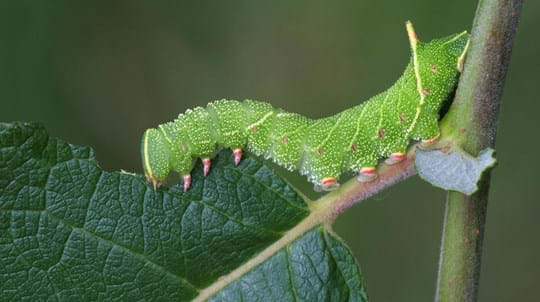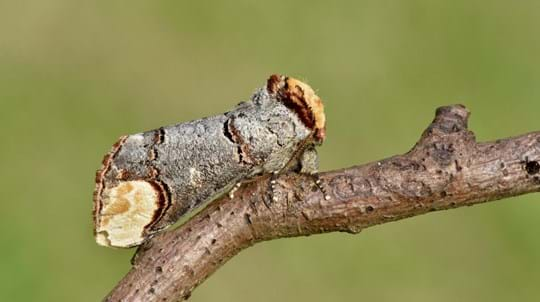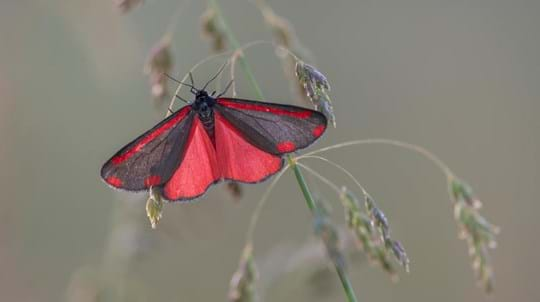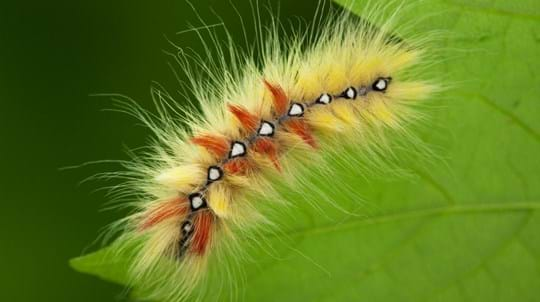
Credit: WILDLIFE Gmbh / Alamy Stock Photo
What do pine-hawk moths eat?
Adults: the nectar of honeysuckle which it feeds on at night.
Caterpillars: the needles of Scots pine and occasionally non-native conifers.
A master of disguise, both as caterpillar and moth. The pine hawk-moth lives up to its name, laying its eggs on pine needles for its caterpillars to feast on.
Common name: pine hawk-moth
Scientific name: Sphinx pinastri
Family: Sphingidae (hawk-moths)
Habitat: coniferous woodland, rural gardens, heathland
Caterpillar foodplants: Scots pine and some non-native conifers
Predators: birds, bats and small mammals
Origin: native
Adults: are sleek and arrow-shaped with long, grey wings. Look for the tell-tale cluster of three dark lines on each wing and twin dark stripes on the thorax.
Wingspan: 6.5-8cm
Caterpillars: are large and smooth with a small, black tail spike and light brown head. The body is green with broken, creamy lines and a brown stripe along its back.

Credit: WILDLIFE Gmbh / Alamy Stock Photo
Adults: the nectar of honeysuckle which it feeds on at night.
Caterpillars: the needles of Scots pine and occasionally non-native conifers.
Adults are on the wing and looking for mates between May and July. Eggs are laid along pine needles in twos or threes.
Caterpillars hatch and feed on mature needles between June and September, eventually descending to the ground to pupate and overwinter in the leaf litter.

Credit: AGAMI Photo Agency / Alamy Stock Photo
Pine hawk-moths are found mainly in southern and eastern England, particularly around conifer woodland and heathland. They will also visit gardens in search of night-flowering plants.
These moths feed by night but can sometimes be found resting on tree trunks during the day. Their clever camouflage does however help them blend in with the patterns of tree bark, so you’ll need sharp eyes! They are attracted to light and are easiest to spot using a moth trap.

Credit: BIOSPHOTO / Alamy Stock Photo
The UK’s population is slowly moving northward and into the Midlands, thanks in part to an increase in conifer plantations.

Amy Lewis • 21 Jun 2021
Hawk-moths are some of the largest and most recognisable moths in the UK. Learn to tell which is which with our visual guide to 10 of the most commonly encountered UK species.
Start identifying
Blog
Amy Lewis • 21 Jul 2021

Blog
Amy Lewis • 02 Jun 2021

Blog
Amy Lewis • 23 Apr 2021

Blog
Charlotte Varela • 08 Jul 2024

Blog
Charlotte Varela • 11 Aug 2023